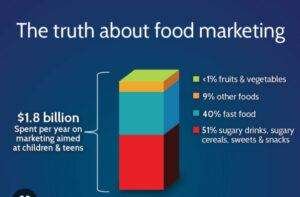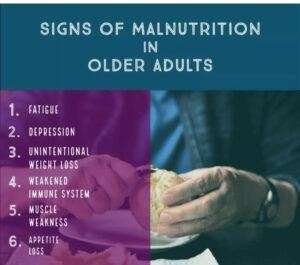As an Amazon affiliate I earn from qualifying purchases at NO extra cost to you.
Did you know heavily processed foods often include unhealthy added sugar, sodium, and fat levels? However, these ingredients make the food we eat taste better. As a result, eating these foods leads to severe health conditions. Whether you are on a restrictive diet or not, it still makes us wonder – what processed foods should you avoid? Processed foods are everywhere, and they are addictive. 
What Processed Foods To Avoid?
I never realized how hard a plant-based diet is until now. I started buying pre-packaged, frozen, healthy meals not too long ago. You pop them in the microwave for a minute, and voila! no joke. I had a hard time losing weight on these easy meals. Now I know why. Processed foods are not designed with your health in mind. I am still wondering what processed foods to avoid.
When I first started eating plant-based, it was terrific. I have always loved my veggies splattered with ranch dressing. I dissed the calorie-dense dressings and bypassed the urge for comfort food. However, my appetite exploded about six months in, and I needed comfort food. Cravings for unhealthy foods are no joke.
Unhealthy Processed Foods to Avoid
You can buy everything from soup to nuts and deliver it to your doorstep. However, buyer beware. Everything that looks like gold isn’t. Did you know you can get any prepacked vegan or vegetarian foods for breakfast, lunch, and dinner in frozen vegetarian dinners, boxed foods, canned goods, and everything you need to be healthy? Over time, processed food is just as unhealthy as junk food.
Highly Processed Food Increase Weight?
Before I switched to plant-based, I was a self-proclaimed junk food foodie. Was it my responsibility to stay away from junk food, or was it the onus of the food industry? Should consumers take responsibility for their eating habits and their weight? According to the statistics, every two out of three Americans are overweight. The science and medical communities are pointing fingers at the food industry.
Blame Food Industries or Families?
Whether here in the United States or abroad, we now have a critical issue related to the food industry. To understand the gravity of this situation, we will delve into two key topics. The first topic is how families contribute to the obesity crisis. The second question is how the food industry contributes to this epidemic. Who is at fault? 
Is the Fast-Food Industry Guilty?
From my own experience, fast food and ultra-processed goodies are incredibly alluring. Before you realize it, you often stock up on Doritos, Tasty Cakes, Twinkies, and Lays sour cream potato chips than you should. Should the fast-food industry pump the brakes on unhealthy products? The same goes for processed vegetarian foods.
Processed Foods Have Their Place and Time
I remember one point in time when I was craving and consuming all the snack well products and buying anything that says low-fat or natural. My habits were terrible. This doesn’t mean you cannot eat chips and other sweets occasionally.
For example, when you go to birthdays, graduations, wedding parties, or potlucks. Naturally, there will be lots of fun foods. The real problem is overeating. Family gatherings are never designed to be painful for foodies. Ideally, everyone will have to face some processed food at some point. Just proceed with caution. A good rule of thumb is to steer away from fast food at all costs
Are Parents Responsible?
The thing is that ultra-processed vegetarian or non-vegetarian foods are cheap and are so tasty. This is why parents need to help guide their children in the proper dietary direction. Parents must be proactive and set a good example. Model healthy eating habits early on and avoid highly processed products.
Fast Food Fuels Obesity
Many foods in the fast-food industry have a high caloric density, high fat, and high sugar content. Plus, they have a low number of micronutrients and fiber. Did you ever notice that you still felt hungry shortly after eating these fast foods? In addition, they push consumers to supersize their meals. These patterns are not just part of the American diet; they are also prevalent in countries like India.
Unregulated Processed Foods Affect Hindus
Firstly, India’s widely practiced religions have dietary laws and traditions. For example, Hindu texts often praise a vegetarian diet. Also, Hindus religiously avoid eating beef because cows are traditionally viewed as sacred. In addition, Muslim teachings, meanwhile, prohibit pork. Here are a few statistics:
- In India, 81% of the population limits meat in their diets
- Almost 40% are vegetarians
India is experiencing a major social disaster in terms of their vegetarian population. As a result, they have an increasing number of overweight and obese citizens on their hands. Processed foods are often unregulated and contain high levels of salt, sugar, and unhealthy fats. These products continue to flood India’s grocery markets. Indian vegetarians need to find a more sustainable, healthier way of life.
The Sustainable Development Goals (SDGs)
The Sustainable Development Goals are a collection of 17 interlinked global goals designed to be a “shared blueprint for peace and prosperity for people and the planet, now and into the future.”
The SDGs were established in 2015 by the United Nations General Assembly (UNGA) and are intended to be achieved by 2030. Their purpose is to end poverty, inequality, and protect the planet. They also plan to go up against the Food industry and eliminate malnutrition. To maintain optimal health, the CDC recommends a healthy diet and 150 minutes of moderate exercise per week, such as walking, swimming, or gardening. Check out Dana Rachele’s “Raised Bed Gardening for Beginners.” Here’s a link: https://amzn.to/4cpfKGC
Malnutrition in Developed Countries?
According to the United Nations International Children’s Fund (UNICEF), the 2018 Global Nutrition Report reveals that malnutrition is unacceptably high and affects every country worldwide. It is also attributed to the fact that a third of reproductive-age women are anemic, while 39% of the world’s adults are overweight or obese. Consequently, around 20 million babies are born underweight. Malnutrition is an ongoing problem.
Is there a Prevalence of Malnutrition?
Often, hidden hunger is due to a micronutrient deficiency. It does not produce hunger as we know it. It is insidious in that “you might not feel it in the belly, but it strikes at the core of your health and vitality” (UNICEF Executive Director).” Another issue arising is the hidden hunger epidemic. 
What is the Hidden Hunger
Hidden hunger is a lack of vitamins and minerals. This condition occurs when the food quality does not meet their nutritional requirements. As a result, the food is deficient in micronutrients such as the vitamins and minerals that we need for growth and development. It affects two billion people across the globe. If you suspect hidden hunger, look for the signs and symptoms.
Hidden Hunger Index?
The Global Hidden Hunger Index (GHI) is a tool designed to comprehensively measure and track hunger on a global scale by region and country. It highlights the successes and failures in hunger and nutrition insecurities. The GHI is a means of monitoring whether countries are achieving hunger-related SDGs. It is used for international ranking.
Symptoms of Hidden Hunger?
The symptoms are unspecific and vary from one person to the next. People with hidden hunger will display fatigue, loss of appetite, exhaustion, and/or susceptibility to infections or skin disease. Although many people do not recognize the deficiency, they will consequently suffer their whole life.
Examples of Hidden Hunger?
Poor diet is a common source of hidden hunger. In underdeveloped nations, nutrition is based mainly on staple crops, such as maize, wheat, rice, and cassava. Unfortunately, these foods provide relatively low amounts of essential vitamins, frequently resulting in hidden hunger. It is also referred to as a Class 12 condition.
Hidden hunger affects two billion people worldwide, according to the World Health Organization (WHO). Even mild deficiencies can affect our well-being and development. Extreme deficiencies lead to mental impairment, poor health, low productivity, and death. The most common micronutrient deficiencies are as follows:
- Iodine
- Iron
- Zinc
Less Common Prevalent Deficiencies:
- Vitamin A
- Vitamin D
- Vitamin B12
- Folate
Consequences of Hidden Hunger
We must supply the body with essential nutrients to optimize and sustain our health. Without these nutrients, the body will go into starvation mode, and malnutrition will occur. This leads to a snowball effect of sickness, diseases, and medical complications. Listed below are some of these challenges that stem from malnutrition:
Babies
- Low birth weight
- Higher mortality rate
- Impaired mental development
Children
- Stunting
- Reduced mental capacity
- Frequent infections
- Reduced learning.
Adolescents
- Stunting
- Reduced mental capacity
- Fatigue
- Increased vulnerability to infection.
Pregnant women
- Increased mortality
- Increased perinatal complications
Adults
Elderly
- Increased mortality
- Including osteoporosis
- Mental impairment
- Higher mortality rate
Solutions to Sustainable Lifestyle
A Balanced Nutritious Diet
Access to nutritious meals is quintessential to our health and well-being. Choosing minimally processed foods must be a top priority to achieve a healthy weight to avoid future health complications. This applies to all humans and lifestyles.
Dietary Diversification
Increasing the quantity of micronutrient-rich foods. Improve the intake of antioxidants, probiotics, and fiber. This ensures the adequate combination of macronutrients such as carbohydrates, fats, and protein.
Fortification
Adding micronutrients to processed foods increases the added nutritional value of a product and prevents specific dietary deficiencies in the population.
Bifortification
Breeding of food crops, using conventional plant breeding methods to increase their micronutrient content. Using modern biotechnology to nutritionally enhance food crops.
Supplementation
Nutrients are delivered in pills or in a highly absorbable form (syrup). This would be a fast way to control vitamin and mineral deficiencies in individuals or the population. Dietary nutrition is key to a healthy lifestyle.
Nutritional Value in Crops Has Decreased
The nutritional values of some popular vegetables, from asparagus to spinach, have dropped precipitously since 1950. Mounting evidence shows that many whole foods of today do not have the same vitamins and nutrients as they had 50 years ago. Soil depletion is an ongoing concern. 
Soil Depletion
The main culprit is soil depletion. Modern agricultural methods have stripped increasing amounts of nutrients from the soil. So, truth be told, this is one of the main reasons for the Malnutrition and Hidden Hunger prevalence across the globe. Agricultural scientists have known this for quite some time.
A 2004 U.S. study found that essential nutrients in some garden crops are 38% lower than in 1950. On average, across the 43 vegetables analyzed, calcium content declined by 16%, iron by 15%, and phosphorus by 9%. The riboflavin and ascorbic acid dropped significantly (bbc.com). Can you imagine the status of our modern-day crops?
Reducing Overweight with Healthier Crops
- There are many moving parts regarding the link between nutrition and agriculture. Nowadays, farmers are leveraging new tools and technology to produce healthier crops. They are striving to bring their crops back up to nutritional standards. At the end of the day, food provides the essential nutrients for the sustenance of bodies.
Final Thoughts
Connecting the dots between nutrition and good health is a no-brainer. The food and drinks we put into our mouths and bodies will positively or negatively affect our overall well-being.
We know the results of eating high-fat, sugary, ultra-processed foods in America or on the other side of the world. Whether we are vegetarian or non-vegetarian, rich or poor, we have a right to wholesome food from our farms and food industries that is healthy, producing, and sustainable. Check out Dana Rachele’s new book “Raised Bed Gardening for Beginners” and learn to grow your own food: https://amzn.to/3RjekDV
Now that we know, let’s do our due diligence to watch the foods we buy and consume to ensure they add value to our bodies, families, and lifestyles. Thank you for hanging out with me today. I hope you share this post with your friends and loved ones so we can go into 2023 with muscular, healthy bodies and minds. Feel free to share your thoughts in the comment section below. I always look forward to great discussions.
References
- thelondonobesityclinic.com
- The World Health Organization https://www.who.int
- https://app.simpleweight.co.uk/subscribe/free-trial
Rachele, Founder
mybluegenes.com (w)
rachele@mybluegenes.com
(e)
